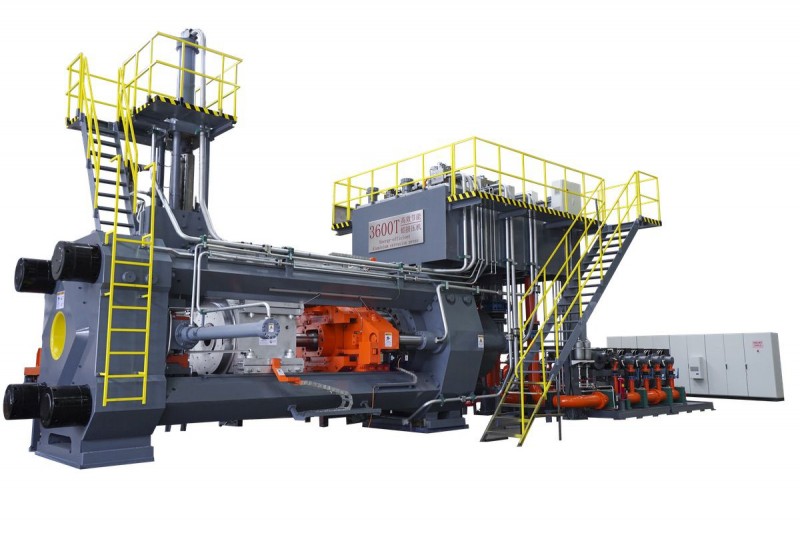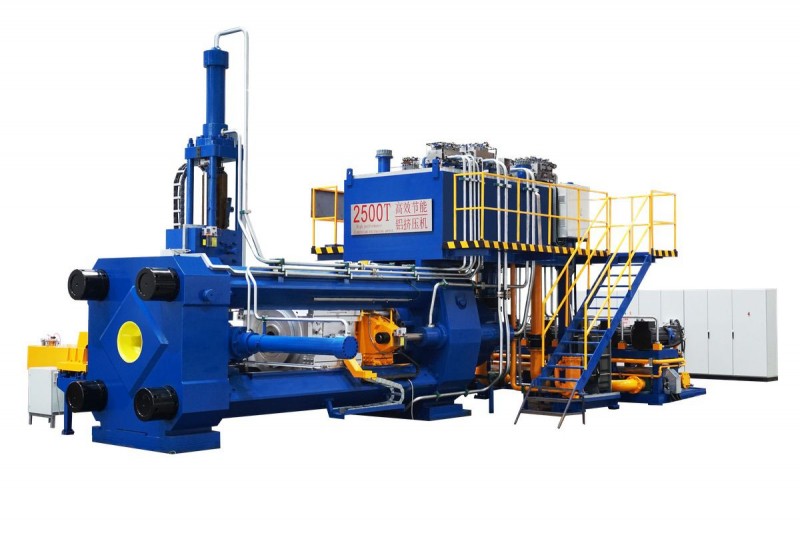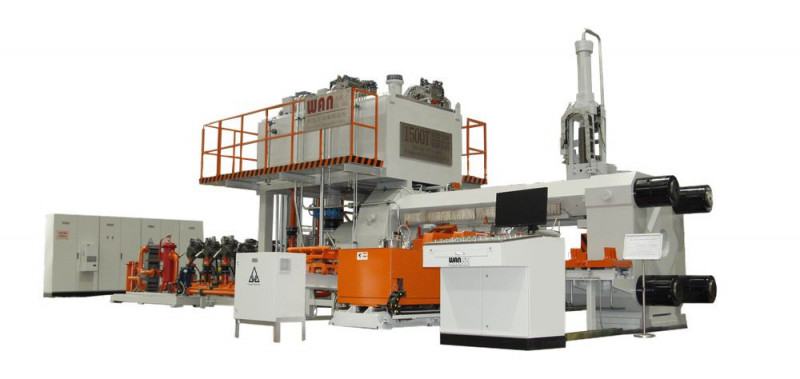Manufacturers utilize the extrusion process, where a hydraulic ram forces a piece of aluminum alloy through an extrusion die, to produce aluminum profiles. Since the process involves multi-faceted metal forming operations, defects may sometimes be present in the extruded products. Nonetheless, global customers have stringent quality requirements for aluminum profiles.
Defects affect the aesthetics, functionality, and structural integrity of the final fabrication. To stay competitive, manufacturers have to implement a quality control system during production to ensure the products meet these requirements. Herein is a comprehensive look at how manufacturers reduce defects in the aluminum extrusion process.

Extruded aluminum is susceptible to damage from certain external forces. This is because the surface of the metal is relatively soft during the process. Manufacturers have to take precautions to prevent defects that can render the products unacceptable as per customer standards.
Different factors related to the extrusion process can cause a variety of defects. The primary factors include materials, techniques, equipment, and human errors. The following are different types of defects that affect extruded aluminum profiles:
●Surface scratches – Superficial abrasions, grooves, or markings present on the surface of the products. Scratches are the most common type of defect in extruded aluminum profiles. The primary cause is usually contact between the aluminum and other materials or particles present during the extrusion process.
Poor handling and insufficient lubrication can also cause scratches.
●Blisters/scales – Small raised regions on the surface of aluminum profiles. The expansion of trapped gasses below the surface of the aluminum billet is the primary cause of blistering.
●Die lines – Indented or raised lines and bands appearing on the surface of the extruded material. The main cause is poorly maintained or worn-out extrusion dies with surface imperfections.
●Bends/Twists – Bending often occurs when the flow of the metal along the extrusion line is not uniform. As such, the extrusion bends or twists in the direction where the material flow is slower. The same can occur when the aluminum billet is not heated uniformly on all sides.
●Dents – Depressions that usually appear on the run-out face of extruded aluminum profiles. They mostly occur when long sections of extruded profiles are moved from one place to another.
●Water marks/surface oxidation – A surface defect caused by excessive oxidation of the metal. It results in a dull appearance and can reduce the corrosion resistance of the product. Trapped moisture from cooling water or condensation is the primary cause.
●Back-end defects – Annular separation in the profile cross section that occurs at the rear third of an aluminum extrusion. It’s a common flaw that results in a cone shaped or fishtail defect in the affected region. Excess friction between the billet and extruder container can cause the billet to separate into an external zone and inner core, which leads to fishtailing.
● Tears – Fine cracks that are present at regions where friction is high like the edges of the product. The main causes of tearing are high extrusion speeds and exit temperature.
Due to the nature of the extrusion process, some of the aforementioned flaws are unavoidable. However, most defects arise in processes manufacturers can control. Below are steps manufacturers take to prevent or mitigate different defects during aluminum extrusion.
Mitigating surface scratches starts with the aluminum alloy (billet) selection process. Poor quality casting billets are more susceptible to surface scratches and other defects. Scratches may also be present in the material even before the extrusion process.
Manufacturers consider several aspects of material feedstock to determine its quality. Most importantly, the aluminum alloy should be free of pores, cracks, slag, or segregated elements. High-quality alloys also have great deformation and plasticity. These characteristics make the materials less susceptible to scratching.
Proper lubrication with a high-quality product is also an important part of reducing surface scratches. Sufficiently lubricating the extruder container and extrusion die minimizes friction and improves metal flow, which helps obtain a quality surface finish.
Manufacturers can also limit surface defects by utilizing isothermal extrusion. This is a temperature control technique that ensures sections of the extruded aluminum maintain a constant temperature at the die outlet.
Temperature is one of the most important parameters manufacturers have to control during the extrusion process. Friction between the casting billet and the container causes temperatures to rise. This also happens gradually at the deformation zone as the ram applies pressure to the billet.
As such, the temperature distribution can be uneven resulting in non-uniform fluidity of the metal. Isothermal extrusion prevents this problem, which can cause surface scratches, cracks, and bends. This technique involves gradient heating of the aluminum billet.
Typically, casting billets are preheated to temperatures between 375° C (700° F) and 500° C (930° F) to minimize flow stress. In isothermal extrusion, different sections of the billet are heated to specific temperatures. An alternative approach is heating different sections of the extruder container.
Isothermal extrusion creates a temperature gradient between the back and front zones of the material as it’s loaded into the container. The gradient prevents a significant temperature increase at the deformation zone relative to the back-end of the container. As such, each billet zone feeds through the die at a consistent temperature, minimizing surface defects.
Controlling extrusion speeds is another way to minimize surface scratches. Aluminum extrusion speed is the rate at which the aluminum profile flows out of the die aperture. Exit speed is a crucial parameter since it can determine the surface and structural quality of the finished product.
Reducing aluminum extrusion speeds helps minimize surface defects by preventing excess or non-uniform metal deformation along the profile’s cross section. Excessive deformation due to fast extrusion speeds causes the aluminum alloy to stick to the working surface of the die, resulting in surface scratches.
Reducing exit speeds may reduce output but it ensures high quality products. Suppliers can use various methods to increase productivity without affecting product quality. One of these techniques is using coolant to lower temperatures at the deformation zone and extrusion die.
Liquid nitrogen is among the most effective coolants for this process. Cold liquid nitrogen absorbs the heat produced during deformation and reduces friction at the die aperture. Consequently, it helps reduce surface and structural defects on the finished product.
One of the methods manufacturers use to prevent blistering is extruding without using a lubricant. This method works best with flat extrusion dies. Forgoing lubricant eliminates the possibility of gasses from heated liquid being trapped below the billet surface.
It also increases friction between the container and the billet. As such, the surface of the billet is restricted along the walls of the container, preventing it from flowing into the flat die. The rest of the material flows beneath the surface through shearing. The residual surface that may contain impurities collects at the dummy block.
Alternatively, manufacturers can use a lubricant and a conical die during extrusion. For this approach, the dead metal zone is reduced such that the billet surface can’t flow into the extrusion. Manufacturers achieve this using a high-quality lubricant in the container and the conical die.
Extruding with a shell also helps prevent blisters. For this method, the diameter of the dummy block is slightly less (a few millimeters) than that of the container. The dummy block shears off the shell of the billet, which may contain blister-causing impurities. The shell remains in the container and is disposed of after every cycle.
Using machined billets can also reduce blisters and scales. Machining off parts of the billet surface can help eliminate impurities and oxide layers to some extent. Also, storing aluminum billets in controlled conditions helps prevent the feedstock from absorbing moisture.
Manufacturers may also employ burp cycles to avoid gas entrapment that causes blisters in aluminum profiles. This method involves removing the hydraulic ram pressure temporarily after upsetting. This allows air or moisture to escape.
Another notable measure to minimize blistering is ensuring the aluminum billet and extruder container are well matched. In addition, preheating the billet before loading removes trapped moisture and gasses. Further, maintaining a temperature gradient along the billet (heating the billet in sections) reduces metal flow issues that often lead to scaling.
Die lines occur due to poor conditions in extrusion dies. Manufacturers can reduce these defects by properly selecting and maintaining dies and supporting equipment such as die holders, die backers, and feeder plates. For instance, die materials such as steel that are less susceptible to aluminum build up are a great solution for minimizing die lines.
Manufacturers also conduct routine inspections and perform several pre-service and post-service die corrections to reduce the lines. Cleaning and polishing die surfaces after every cycle helps eliminate minute particles or contaminants that can cause markings on the surface of the profiles. It also facilitates smooth metal flow through the extrusion die and supporting tools.
Suppliers also take steps to manage wear and tear of critical die surfaces. An effective solution is coating the surfaces with a wear-resistant metal. The coating reduces friction and intake of hard particles. It also reduces material adhesion and fatigue due to high temperatures.
Aluminum profile producers can also reduce die wear by maintaining proper hardness levels. High hardness results in a brittle extrusion die and increases the chances of breakages and metal chip-offs. Preheating extrusion dies reduces hardness while routinely nitriding the surfaces increases hardness.
If the surfaces of an extrusion die degrade beyond a certain level, manufacturers replace the die.


